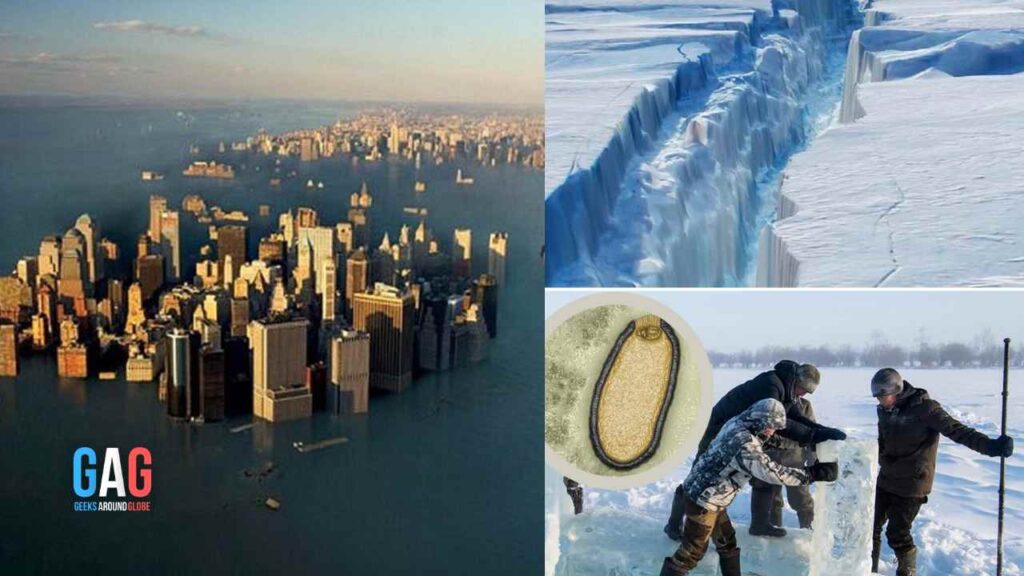What If All the Ice in Antarctica Melted?

Antarctica is the icy continent at the bottom of the world. It’s home to over 90% of the world’s freshwater, all locked up in ice. But what if all that ice melted?
It’s a scary thought, but it’s important to think about the potential consequences of climate change. If all the ice in Antarctica melted, sea levels would rise by over 200 feet. This would inundate coastal cities around the world, displacing millions of people.
Let’s have a more detailed look at the potential consequences of melting Antarctic ice.
Rising Sea Levels: Parts of the world submerged
The most direct consequence of a melted Antarctica would be a sea level rise of around 70 meters (230 feet). Iconic coastal cities — think Miami, Copenhagen, and Amsterdam — would go down to the records of history. Florida might become a modern-day Atlantis. But countries like the UK and Uruguay would also see significant portions of their lands submerged. And on the flip side, Australia might find itself with an expansive inland sea.
The resulting scenario? A relocation challenge for roughly 40% of the world’s population! That’s over 3 billion people searching for new homes, jobs, and ways of life. For the USA, a nation with an extensive coastline and numerous coastal cities, the impact would be particularly severe.

Changing Oceans
Beyond the rising tides, our oceans would undergo a fundamental shift. As Antarctic freshwater flows into the seas, it would dilute the salinity levels. This change might seem minor, but even subtle shifts can disrupt marine ecosystems, many of which are sensitive to such changes. Moreover, alterations in oceanic currents could lead to unpredictable climate patterns.
Hidden Dangers in the Ice
There’s another unsettling aspect to consider: the potential release of ancient microorganisms. Research has found dormant, yet viable, organisms in deep glacial ice. If they were to re-enter our environment, we might encounter diseases for which we’re unprepared!
Antarctica has over 75,000 viral operational taxonomic units (vOTUS). Scientists believe that there are largely unknown, highly diverse, and variably structured virus communities lurking beneath the ice giants. They are million years old as well. Terrifyingly, if all the ice melts, it can cause numerous diseases that we have never seen or heard!

Antarctic plate starts to rise!
An ice-free Antarctica would look quite different. Instead of the expansive landmass we recognize today, we’d see a collection of islands, revealing parts of the Earth previously hidden for millennia.
Antarctic plate would start to rise. This is known as isostatic rebound, and imagine it like taking heavy cargo off a ship. The scenario is about the lifting of massive slabs of rock and magma. So this rebound is slow and it would take tens of thousands of years to rise to a new equilibrium level. Northern Canada and Scandinavia are some examples of places that are still rebounding back 10,000 years. That is after the last ice age!
This rebound is estimated to take place at the rate of about 7.5cm per year. This is within the first 2,000 years. The rebound then slows down to 2.5cm per year. However, the whole process is estimated to take around 20,000 years. The lift is not uniform. It can reach up to 400m.

A World of Climatic Shifts
An entirely melted Antarctica would signal extreme global temperature rises. Large swathes of land, especially near the tropics, could become too hot for habitation. The resulting changes in agriculture and ecosystems might trigger food shortages and threaten various species.
Conclusion
While this exploration might feel unsettling, it’s essential to remember that it’s a hypothetical scenario. Yet, the recent changes in Antarctic ice levels should prompt us to think and act. Addressing climate change is about safeguarding our planet for future generations.
Every decision we make, from supporting green initiatives to adopting sustainable habits, plays a part in shaping tomorrow. So, as we reflect on these “what if” scenarios, let’s also consider the positive actions we can take today.
Also read,



